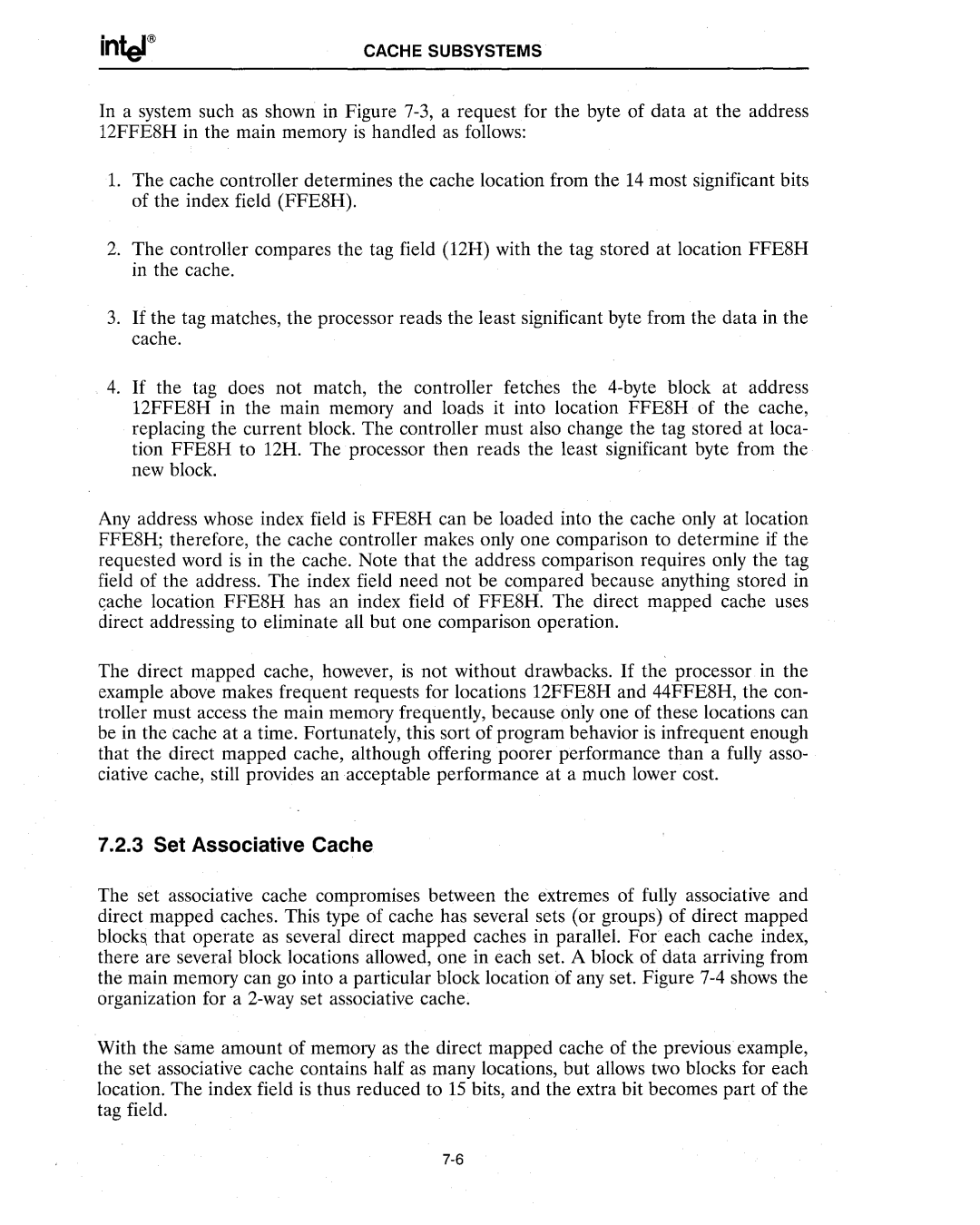
CACHE SUBSYSTEMS
In a system such as shown in Figure
1.The cache controller determines the cache location from the 14 most significant bits of the index field (FFE8H).
2.The controller compares the tag field (12H) with the tag stored at location FFE8H in the cache.
3.If the tag matches, the processor reads the least significant byte from the data in the cache.
4.If the tag does not match, the controller fetches the
Any address whose index field is FFE8H can be loaded into the cache only at location FFE8H; therefore, the cache controller makes only one comparison to determine if the requested word is in the cache. Note that the address comparison requires only the tag field of the address. The index field need not be compared because anything stored in ~ache location FFE8H has an index field of FFE8H. The direct mapped cache uses direct addressing to eliminate all but one comparison operation.
The direct mapped cache, however, is not without drawbacks. If the processor in the example above makes frequent requests for locations 12FFE8H and 44FFE8H, the con- troller must access the main memory frequently, because only one of these locations can be in the cache at a time. Fortunately, this sort of program behavior is infrequent enough that the direct mapped cache, although offering poorer performance than a fully asso- ciative cache, still provides an acceptable performance at a much lower cost.
7.2.3 Set Associative Cache
The set associative cache compromises between the extremes of fully associative and direct mapped caches. This type of cache has several sets (or groups) of direct mapped block~ that operate as several direct mapped caches in parallel. For each cache index, there are several block locations allowed, one in each set. A block of data arriving from the main memory can go into a particular block location of any set. Figure
With the same amount of memory as the direct mapped cache of the previous example, the set associative cache contains half as many locations, but allows two blocks for each location. The index field is thus reduced to 'j5 bits, and the extra bit becomes part of the tag field.
